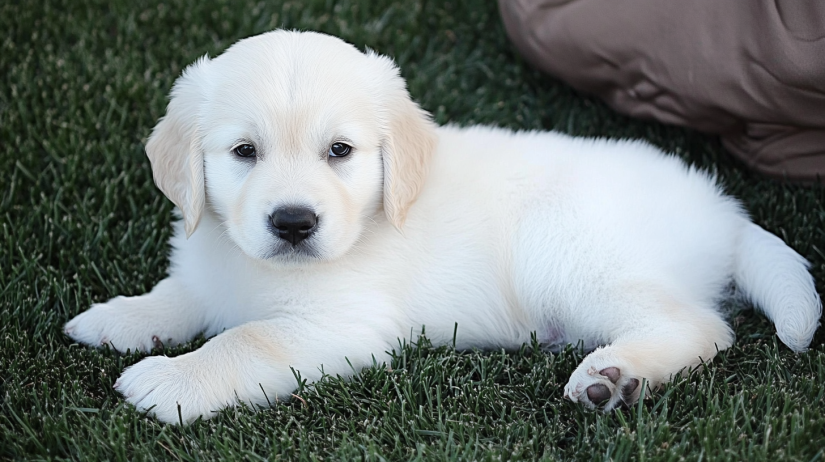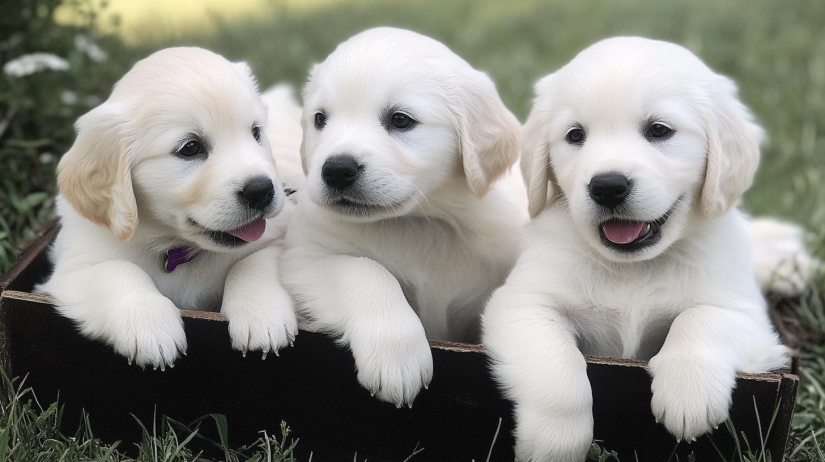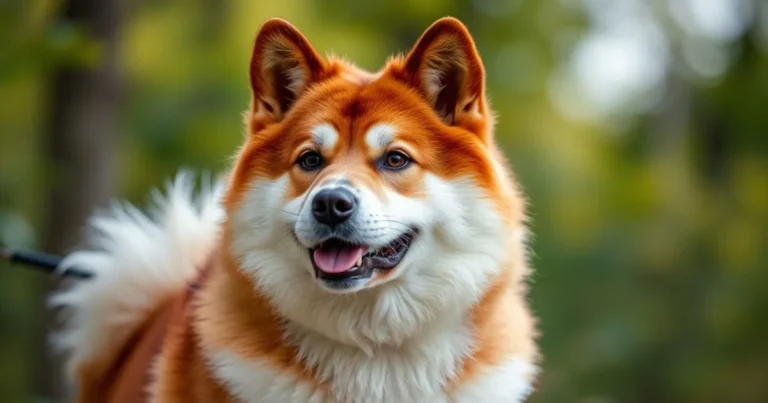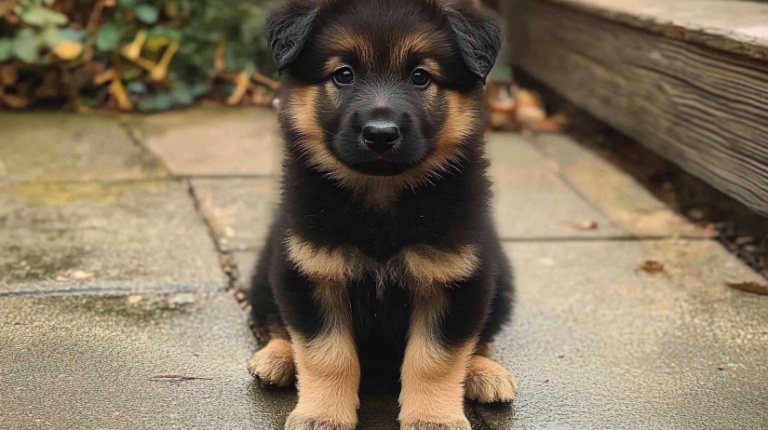White Golden Retriever Puppies: 9 Amazing & Positive Secrets
Introduction
Visualize this: You walk in the door, and a fuzzy, creamy bundle of excitement rushes up to greet you—tail wagging, eyes sparkling, ready to shower you with unconditional affection. That’s the everyday welcome you could experience if you share your life with white golden retriever puppies. Although these pups look slightly different from their more traditional golden siblings, they share the same irresistible sweetness, intelligence, and boundless devotion that make all Golden Retrievers such beloved family companions.
But adopting white golden retriever puppies isn’t just about cuddles and smiles. As with any breed, you’ll need to consider factors like exercise demands, grooming routines, potential health concerns, and how they’ll mesh with your household dynamic. In this comprehensive guide, we’ll delve into every aspect of owning and caring for white golden retriever puppies, equipping you with insights on everything from their breed origins to advanced training tips. So buckle in—if you’re ready for tail-wagging antics and a best friend who’ll stick by you for years to come, you’re in the right place.
A Brief Look at the White Golden Retriever’s Background
The Golden Retriever Heritage
The Golden Retriever hails from Scotland, originally bred in the mid-19th century by crossbreeding various retrievers with Tweed Water Spaniels and other sporting dogs to create a dependable, gentle gun dog adept at retrieving fowl. Recognized by the American Kennel Club (AKC) since 1925, Golden Retrievers grew in popularity for their intelligence, loyalty, and unmatched affection for families.

Variations in Coat Color
Though we often picture Golden Retrievers with those classic golden to red hues, the breed’s official standards include a broad range of shades—from deep gold to lighter cream. white golden retriever puppies, specifically, carry recessive genes that produce a significantly paler or cream-toned coat. They’re sometimes referred to as “English Cream Golden Retrievers” or simply “Light Golden Retrievers,” though breed experts note they’re not separate breeds—just color variants within the standard Golden Retriever gene pool.
Popularity of White Golden Retriever Puppies
In recent years, “English Cream” or “European Cream” Goldens have become fashionable due to their striking pale coats and the perception that they might have fewer health problems than darker-shaded lines. While some lines do emphasize certain health testing or conformation traits, it’s important to note that color alone doesn’t guarantee robust health or better temperament. Nevertheless, many dog lovers are captivated by the radiant appearance of white golden retriever puppies, finding them simply irresistible.
Physical Characteristics
Size and Weight
Like all Golden Retrievers, white golden retriever puppies typically grow into medium-to-large dogs, with adult males standing about 23–24 inches at the shoulder and females around 21.5–22.5 inches. Males typically weigh 65 to 75 pounds, while females are 55 to 65 pounds. Though individuals can be slightly smaller or larger, the “white” aspect doesn’t significantly alter their adult size compared to other Golden Retrievers.
Coat Texture
Expect a dense, water-repellent outer coat with a thick undercoat designed to keep them comfortable in various climates. The coat’s color can vary from pure snow-white to a soft cream or faint gold overlay, but all share that signature Golden topcoat—long, wavy hair that feathers around the tail, legs, and chest. Regular brushing is necessary to keep shedding manageable and reduce matting.

Facial and Body Structure
white golden retriever puppies exhibit the same gentle face, expressive eyes, and sturdy build characteristic of the breed. They have strong, muscular bodies built for retrieving and swimming, while their heads feature well-defined stops, kind eyes, and softly folded ears. Over time, some breeding lines in Europe emphasize a broader skull and slightly stockier build—traits sometimes seen in “English Cream” lines.
Table: Growth Stages of White Golden Retriever Puppies (Approximate)
| Age | Weight Range (Males) | Weight Range (Females) | Developmental Milestones |
|---|---|---|---|
| 8 Weeks | 10–15 lbs | 8–12 lbs | Transition to new home, basic bonding, early socialization |
| 4 Months | 30–40 lbs | 25–35 lbs | Teething phase, house-training progression, start obedience |
| 6 Months | 45–60 lbs | 40–50 lbs | Rapid growth, heightened curiosity, refine basic commands |
| 1 Year | 65–75 lbs (mostly grown) | 55–65 lbs (mostly grown) | Approaching adult size, mental maturity still developing |
| 2 Years+ | Varies by line | Varies by line | Full maturity reached, stable temperament, final coat texture |
Personality and Temperament
Loving and People-Oriented
If you want a dog that happily follows you from room to room, you’ll find that white golden retriever puppies naturally fit the bill. Goldens in general thrive on human companionship and strongly desire to be part of every family activity, be it a leisurely stroll or a game of fetch. This affectionate nature makes them fantastic therapy and service dogs, as well as devoted personal companions.
Intelligent Yet Playful
Golden Retrievers rank high in canine intelligence, and white golden retriever puppies are no exception. They pick up commands quickly, relish puzzle toys, and are eager to earn praise from their favorite humans. Coupled with their playful streak, this intelligence means you’ll need to keep them mentally stimulated—boredom can lead to mischievous behaviors like chewing or digging.
Gentle Demeanor
Renowned for their soft mouths (thanks to generations of retrieving birds without damaging them), Golden Retrievers typically have a gentle, patient approach with children. white golden retriever puppies maintain this hallmark gentleness as they grow up, though they might occasionally forget their size and get a bit bouncy when excited. Training them to greet people calmly helps harness their exuberance.
Social Butterflies
It’s no secret that Golden Retrievers love meeting new people, often greeting strangers with wagging tails and bright eyes. This friendly approach extends to other animals too—white golden retriever puppies usually get along splendidly with fellow dogs or even cats when introduced properly. Early, positive socialization ensures they remain confident in diverse situations.
Adopting or Purchasing a White Golden Retriever Puppy
Finding Reputable Breeders
Despite their popularity, color-based marketing can sometimes overshadow crucial aspects like health testing and responsible breeding. If you’re in search of white golden retriever puppies, prioritize breeders who:
- Perform Genetic Screenings: They test parent dogs for hip, elbow, eye, and heart conditions common to Golden Retrievers.
- Provide Veterinary Documentation: Proof of vaccinations, deworming, and wellness checks.
- Openly Discuss Lineage & Health: They explain the puppy’s lineage, typical lifespans, any potential breed-specific issues, and socialization practices.
Rescue Organizations
Alternatively, you might find white golden retriever puppies or adult dogs available for adoption through rescue groups specializing in Golden Retrievers or all-breed rescues. Adopting a dog in need of a loving home can be a rewarding experience, and many rescue volunteers can help match you with a dog that fits your lifestyle and living situation.
Questions to Ask
- Health Clearances: “Have the parents been screened for hip dysplasia, elbow issues, eye problems, and heart conditions?”
- Temperament: “Are the parent dogs calm and friendly? How are the puppies socialized?”
- Environment: “Are the puppies growing up in a home with exposure to daily life, including sounds and people?”
Daily Care for White Golden Retriever Puppies
Nutritional Needs
Golden Retrievers are known for healthy appetites, so feeding your white golden retriever puppies a balanced puppy-specific diet is critical. Look for formulas that include:
- High-Quality Protein: Real meat as the first ingredient.
- Moderate Fat and Calories: Avoid excessive weight gain, which can stress developing joints.
- Essential Nutrients: Calcium, phosphorus, and DHA for healthy bone and brain development.
Feeding them 2–3 meals per day until about six months old usually works well. Then you can transition to two meals as they approach adult size. Overfeeding is a common pitfall, so keep an eye on portion sizes and your puppy’s weight.
Exercise and Activity
Golden Retrievers have an athletic background, but puppies need age-appropriate exercise. For white golden retriever puppies:
- Short Walks: Several 10–15 minute walks daily or one to two slightly longer strolls.
- Play Sessions: Fetch, gentle tug-of-war, or hide-and-seek.
- Avoid Strenuous Exercise: Excessive running or jumping can harm developing bones and joints. Gradually increase intensity as they grow older.
As your puppy matures, they’ll be ready for moderate hikes, swimming, or advanced training sports like agility or rally obedience—perfect outlets for their energy and intelligence.
Grooming and Shedding
Golden Retrievers famously “blow coat” once or twice a year, but you’ll see moderate shedding year-round. For white golden retriever puppies, a consistent grooming routine helps keep that pale fluff from taking over your home:
- Brushing: At least 2–3 times weekly with a slicker brush or undercoat rake.
- Bathing: Every 6–8 weeks or as needed. Over-bathing can dry out skin and coat.
- Nail Trims: Every few weeks—if you hear tapping on floors, it’s time to clip.
- Ear Checks: Clean ears gently if you notice debris or redness; Goldens’ floppy ears can trap moisture.
Training and Socialization
- Positive Reinforcement: Golden Retrievers respond wonderfully to treats, praise, and consistent encouragement.
- Short Sessions: Puppies have limited focus, so 5–10 minute training bursts multiple times a day are more effective than one prolonged session.
- Early Socialization: Expose your puppy to different sounds, people, and environments, ensuring they grow into well-adjusted adults.
- Obedience Basics: Sit, stay, come, heel—these commands lay the foundation for future success.
Encourage them to explore new situations at their own pace, gently building confidence and preventing fearfulness.
Common Health Considerations
Regardless of color, Golden Retrievers face potential breed-specific challenges:
- Hip and Elbow Dysplasia: Developmental joint issues that can cause discomfort or lameness.
- Eye Disorders: Cataracts or progressive retinal atrophy.
- Heart Conditions: Subvalvular aortic stenosis (SAS) is occasionally seen.
- Cancer: Goldens have a higher-than-average rate of various cancers.
Regular veterinary checkups, a balanced diet, maintaining a healthy weight, and choosing a breeder who performs health clearances help minimize these risks. Also, keep up with core vaccinations, flea/tick preventatives, heartworm prevention, and other recommended care.
Life with White Golden Retriever Puppies: Family Dynamics
Great with Kids
Golden Retrievers in general are known for their patience and tolerance, making them excellent family dogs. white golden retriever puppies maintain that gentle nature, though they might occasionally knock over small children in their enthusiastic greetings if not taught appropriate manners. Teach kids to approach puppies with respect: no ear-pulling, tail grabbing, or rough play.
Compatible with Other Pets
Whether you already have a cat or another dog, white golden retriever puppies typically adapt quickly. They’re naturally sociable and have low aggression levels. However, supervised introductions, especially with older or territorial pets, ensure a smooth transition.
Suitable for Apartments?
While they do best with a yard to romp in, white golden retriever puppies can adapt to apartment living if you commit to regular walks, exercise, and mental stimulation. Their medium-to-large adult size means you’ll need to plan enough room to accommodate them comfortably. If you can’t offer a yard, aim for multiple daily outdoor breaks and weekend adventures.
Travel Companions
Golden Retrievers often relish car rides, hikes, or beach outings—white golden retriever puppies are no different. Their love of water can translate to joyous splashing at the lake or gentle swims, though not all are equally enthusiastic. If traveling frequently, start them young with short trips in the car, positive crate associations, and visits to new settings so they grow comfortable.
Real-Life Anecdotes: White Golden Retriever Puppies in Action
Case Study 1: Luna, the Therapy Star
Luna, a calm white golden retriever puppy, received specialized training to become a therapy dog at a local children’s hospital. Starting with basic obedience, she progressed to advanced socialization, ensuring she remained gentle even when kids petted her face or tugged at her soft coat. Today, she visits the hospital weekly, offering comfort to patients who eagerly await her radiant presence and warm snuggles.
Case Study 2: Finn, the Adventure Buddy
Finn’s family led an active outdoor lifestyle—camping, hiking, and exploring lakeside trails. Initially, Finn was a playful, somewhat clumsy white golden retriever puppy that needed slow introductions to water and uneven terrain. By seven months old, he had developed a confident stride, swimming gleefully beside the family’s kayak and calmly settling in a tent at night. Thanks to consistent training and gentle exposure, Finn became the ultimate outdoor companion.
FAQs
Does a white-coated Golden Retriever live more years?
They usually share the same lifespan range as other Goldens. white golden retriever puppies can live around 10–12 years. Good healthcare and balanced routines are bigger longevity factors than coat color.
Do white golden retrievers have fewer health problems?
Their coat shade doesn’t eliminate genetic risks. white golden retriever puppies may still face the same breed-specific challenges. Reliable health screenings remain the key factor in preventing issues.
Will a white Golden be smaller or larger than usual?
They tend to match the usual Golden Retriever size range. white golden retriever puppies commonly end up between 55 and 75 pounds. Each pup’s genetics will guide ultimate height and weight.
Does a white coat demand extra upkeep?
Not beyond standard Golden care. white golden retriever puppies might require slightly more frequent brushing to remove visible dirt. Consistent grooming keeps that pale fur glossy and free of mats.
Do pale Goldens learn commands quickly?
They’re just as trainable and intelligent as darker-coated Goldens. white golden retriever puppies pick up new cues swiftly with patient guidance. Using treats and praise fosters their natural willingness to please.
Will their white fur get everywhere?
Expect moderate shedding, typical of the breed. white golden retriever puppies do drop hair continuously, though brushing limits the mess. Seasonal shedding might be heavier but can be controlled with regular grooming.
Conclusion
The allure of white golden retriever puppies goes beyond their striking cream-colored coats—these pups embody the same gentle, friendly, and intelligent qualities that make Golden Retrievers cherished worldwide. From their playful puppy stages to their calm adult years, they show unyielding devotion to their families, forging bonds that often last well over a decade. By adopting consistent training methods, mindful nutrition, and regular grooming routines, you can lay the foundation for a lifetime of tail-wagging companionship. Ready to share your home (and heart) with a sunshine-hued best friend? Drop a comment below to connect with fellow Golden admirers—together, we can celebrate and learn from the joys of raising white golden retriever puppies!
For more guidance on canine health, training, and adoption, visit the
American Kennel Club (AKC)—a reputable organization providing resources on breed standards, responsible ownership, and more.







